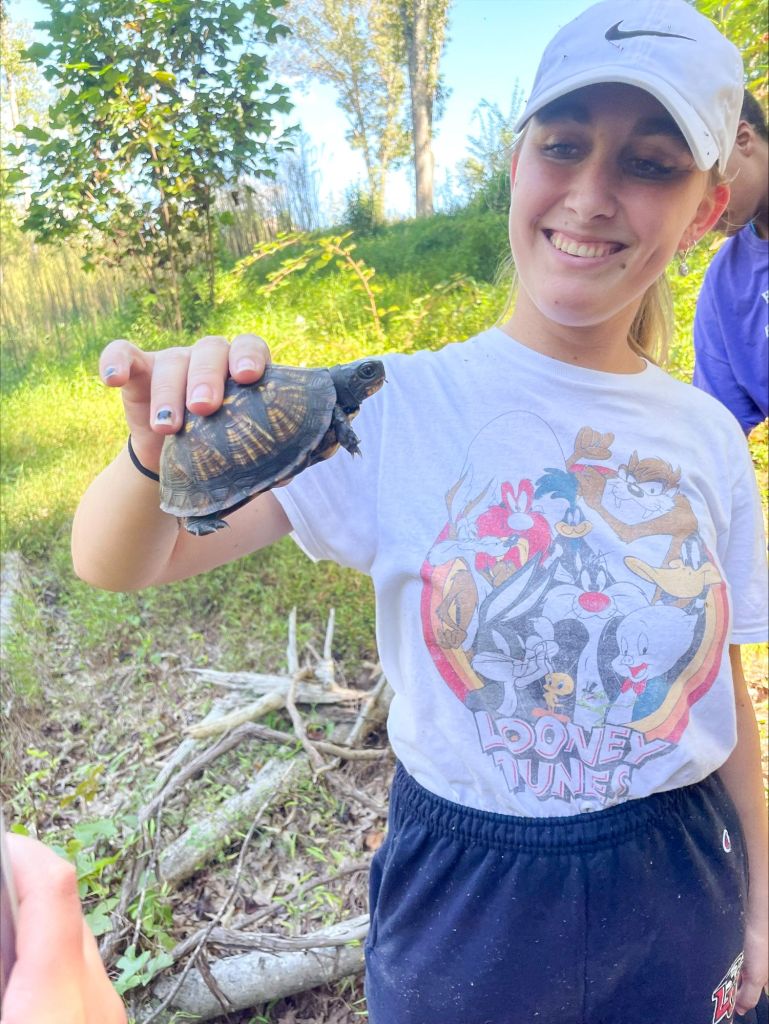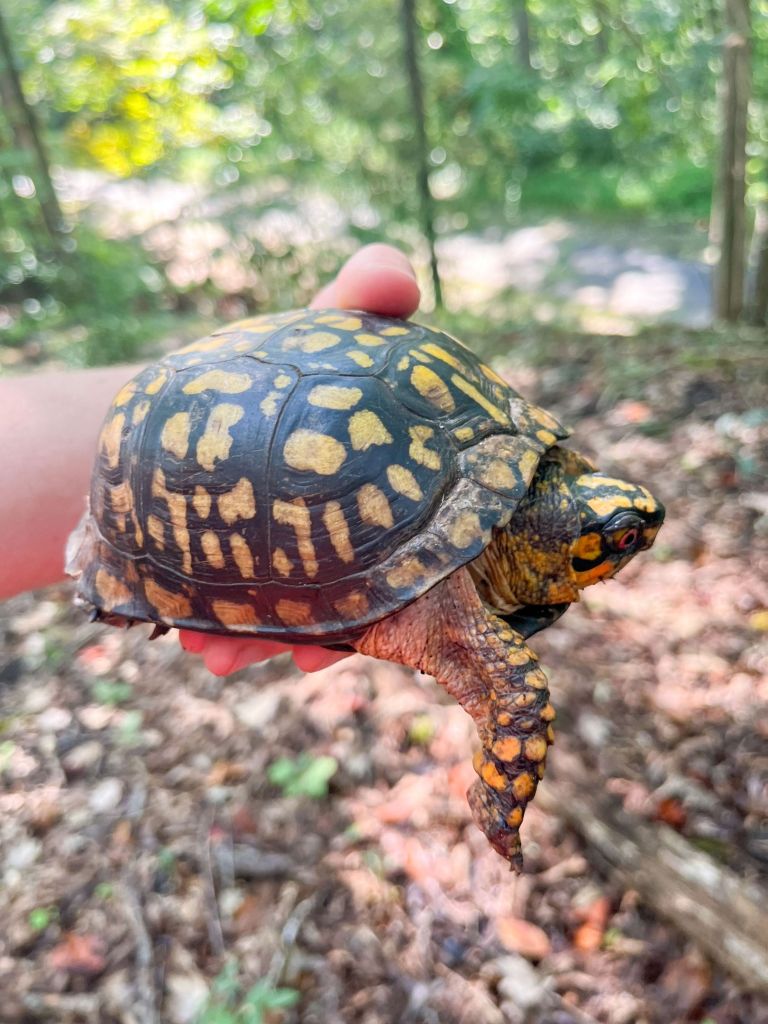CSER opportunity allows students to examine God’s world on a wild and in-depth level

The cityscape of downtown Lynchburg may not be a common place to find extensive wildlife, however, this local spot is where Liberty biology students find CSER opportunities by studying a small critter living in the forested areas bordering downtown.
Back in 1999, former Liberty Professor Gordon Wilson, with a doctorate in environmental science and public policy, began a study on the box turtles inhabiting a study site adjacent to Blackwater Creek Nature Trail in downtown Lynchburg.
These small turtles, no more than nine inches in length, are uniquely patterned with orange markings on their shells and head. Wilson’s goal was to track these turtles by creating small notches along the edge of their shell, known as the carapace.
Creating these notches does not hurt the turtles but allows researchers to tell the turtles apart by the number and placement of the notches. After Wilson’s study was completed, the study was passed down to Norman Reichenbach, a biology professor at Liberty University with a doctorate in entomology, who took over the study and introduced it to his students.

From August through October, groups of four to eight CSER students walk slowly and parallel to one another through the study site. During each trip, which takes approximately two to three hours, they look for new and previously marked turtles. Students then record the turtles they find and mark the new ones. Students also examine previous markings (the notches) on turtles to determine the turtles’ age, their last encounter with the turtle and they noted any changes in size or damage to the turtles’ shells.
“This is a team effort procedure. The more eyes on the site, the more turtles you can find. On a good day, we will see eight to nine turtles — just last week we saw a turtle that had been marked in 1999 when Dr. Wilson first started this study,” Reichenbach said.
Reichenbach’s ecology students are given their own opportunity to interact with these turtles by going on telemetry trips. Throughout the first few months of the semester, while it is still warm, a group will go out every week to track a few of the turtles. These select turtles have transmitters glued to their shells by the students and ecology TAs from when the turtles were first found at the beginning of the semester. The ecology students use radiotelemetry, allowing them to track specific turtles and pinpoint their exact locations.

This technology allows for the students to locate the individual turtles using a directional antenna and receiver that will beep louder and louder when getting close to a turtle with a previously glued transmitter. This has permitted students to track movements of turtles throughout the semester.
Since box turtles can live for 30 to 50 years, many named by Wilson can still be found. Wilson’s tradition of naming the turtles continues with names such as Demogorgon, Harriet and Stinky Boi.
This opportunity is mainly for BIOL 310 students, who are in ecology, but is also geared towards BIOL 495 students, who can use this directed research as a targeted project for their curriculum. Students can even take part in this project as honors credit.
“This opportunity is a form of ministry (as) these students get to understand God’s creation as they examine the intricate way such a small and interesting creature fits in His world,” Reichenbach said.
This CSER opportunity is offered in the fall as the turtles hibernate through much of the spring semester, generally emerging from being buried in the soil about mid-April. Students learn to step out of their comfort zones and explore the fascinating lives of these box turtles.
Popa is a feature reporter, Wineman is the B-section copy editor and Pace is the asst. feature editor for the Liberty Champion
